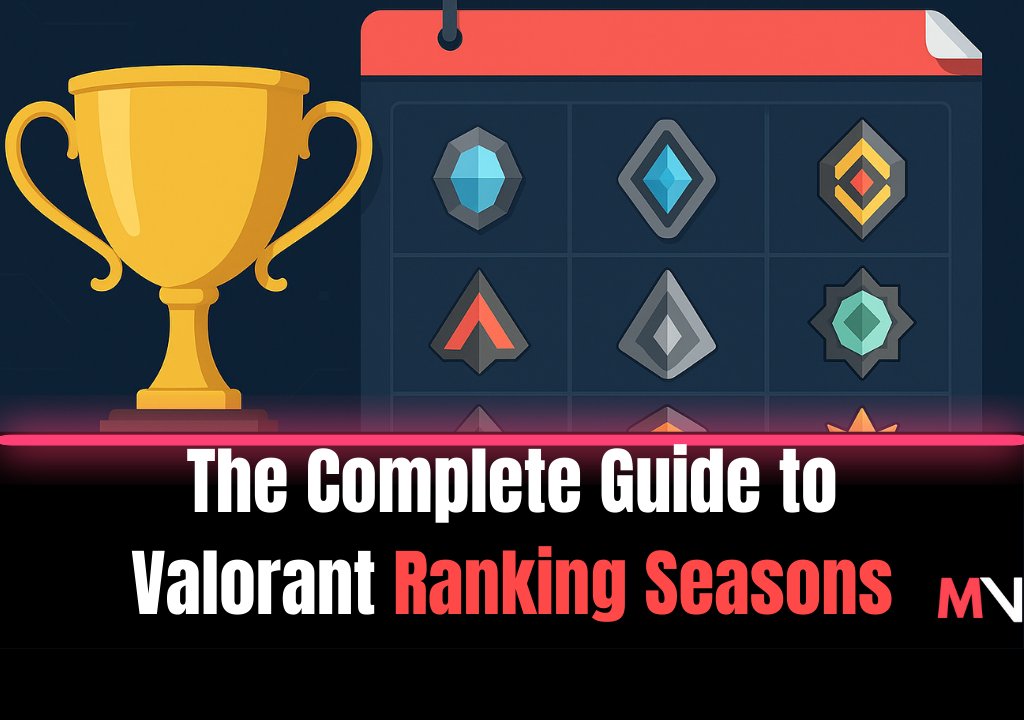The Complete Guide to Valorant Ranking Seasons
Valorant's ranked seasons affect how you climb, reset progress, and how your MMR and RR work in different Episodes and Acts. If you want to get better at the game and climb faster, it's important to know how seasons work. This guide goes over Valorant's ranking seasons, how resets work, and what they mean for your MMR growth.
🟢 What Is a Season of Valorant Rankings?
There are two parts to a ranking season in Valorant: Episodes, which are bigger content cycles that last about six months, and Acts, which are smaller phases that last about two months each. There is a ranked ladder for each Act, but all the Acts in an Episode are connected.
- Episodes bring big changes to the game, like new maps, agents, or changes to the ranked system.
- Placement matches refresh your rank while still using your hidden MMR from how well you did before.
🟢 Rank Resets and Placements
At the start of each new Act:
- Five placement matches are required for players.
- Your hidden MMR stays the same, so you usually end up close to your old rank.
- Visible rank resets to a point slightly lower than your previous rank, which gives you room to rise again.
At the start of a new Episode:
- Resets are harsher because they push players down further to check their skill levels again.
- Riot's system changes make placement matches last between 5 and 10 games.
🟢 How MMR Changes with the Seasons
Your MMR doesn't reset as quickly as your visible rank. Riot keeps MMR stable so that matchmaking is accurate. That means:
- You will rise faster if you had a high MMR at the end of last season.
- If your MMR was lower than your rank, you will lose more RR until they are the same.
- Seasonal resets mostly change your visible badge, not your actual skill rating.
🟢 Rewards for Each Season Based on Rank
Players get rewards based on their rank and activity in each Act:
- Gun Buddies for reaching Gold+ or higher.
- Rank Badges for the highest rank you got that Act.
- Your profile shows seasonal stats.
These rewards make you want to keep climbing every season, even if resets push you down.
🟢 Seasonal Strategy to Climb Faster
✔ Climb early in the Act – the reset makes lobbies more fair and speeds up progress.
✔ Keep an eye on MMR changes – see if your hidden rating is higher or lower than your visible rank.
✔ Adapt to changes in the meta – new patches often come with Acts that change which agents are best.
✔ Stay consistent – long breaks make MMR less accurate, which makes resets harder.
🟢 In Conclusion
Valorant ranking seasons aren't just for looks; they're meant to keep the ladder balanced, the climb fresh, and the competition fair. When you know how the system works, you can plan placements wisely, set realistic goals, and climb smarter instead of harder.
🔗 Keep an Eye on Your MMR Progress Throughout the Year
Do you want to know how much your MMR changes after each new Act or Episode? You can see your hidden rating, seasonal changes, and detailed rank progression data at mmrvalorant.com
. Stay ahead of resets and climb with ease.
Tags

Author




